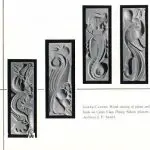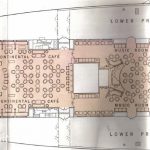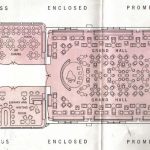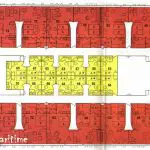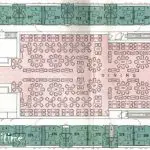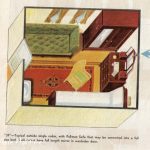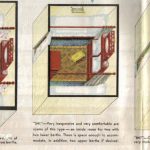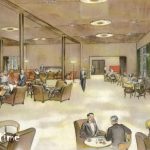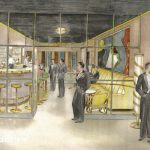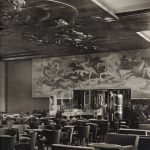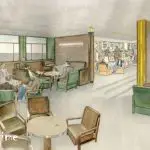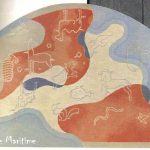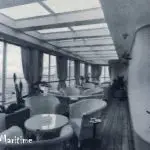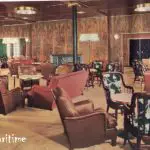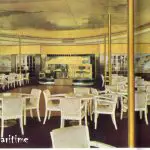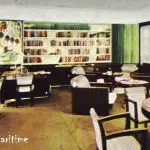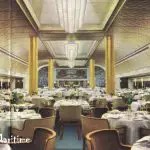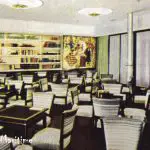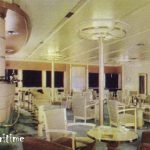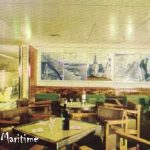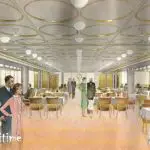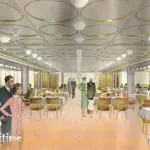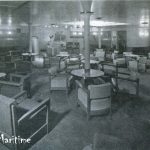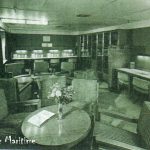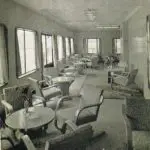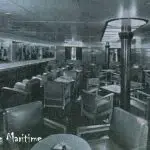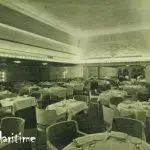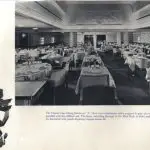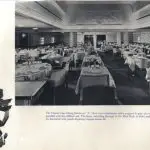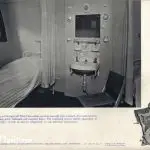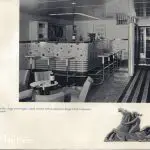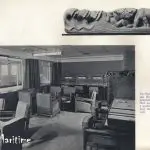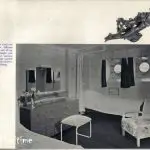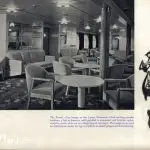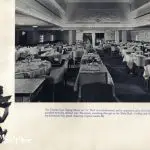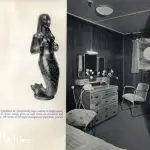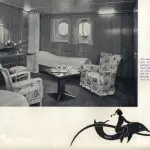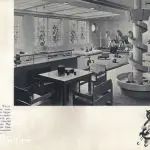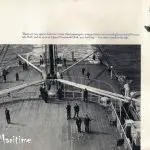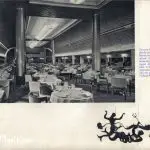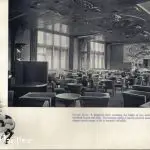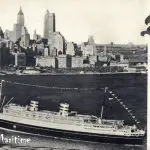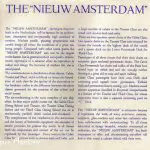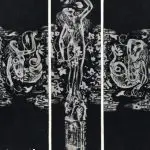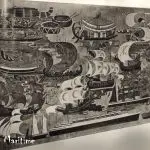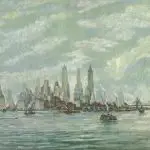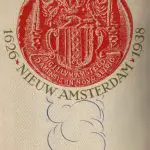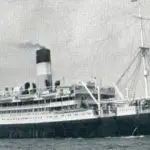The Art and Architecture of the Nieuw Amsterdam
The Nieuw Amsterdam, of all the Depression era ships of state, led a charmed existence. Introduced in recessionary 1938, her pre-war service life consisted of a single brilliant year and can be seen as the final elegant flourish of the golden days day of travel before the war, postwar austerity and jet travel permanently altered the way people traveled. Neither the largest nor the fastest, the Nieuw Amsterdam earned her place in liner history by being the ultimate combination of elegance, comfort, and practical design in a three class ship.
1. Touring The Ship of Tomorrow
In her original configuration, the Nieuw Amsterdam carried 1220 passengers in three classes, with 566 in First; 455 in Tourist and 209 in Third. She was created with cruising as well as crossing in mind, and so her upper two classes were designed to be as compatible as possible for one-class voyages. First class cabins were paneled in wood, while similarly sized rooms in Tourist were finished with a composite surface, referred to as “Muralart” in press releases. Bathrooms in both classes were of the same size and, again, differed only in finish. All of her First class cabins came with private facilities, as did more than half of those in Tourist; unique to the Nieuw Amsterdam was that a number of Third class cabins on B Deck, meant to be interchangeable with those in Tourist, also had private shower and toilet facilities. ‘Though the Nieuw Amsterdam had nothing aboard to match the Grande Luxe suites of the Normandie, she could boast of uniformly large First class and Tourist class cabins. Her Third class cabins were austere but comfortable, and in addition to the two and four berth configurations, there were also a handful of Third class ‘singles,’ another possible Nieuw Amsterdam first.
The liner’s public rooms reflected the growing shift towards simplicity of design in the late 1930s. The stark elegance of postwar liners had not yet arrived, but Holland-America’s flagship bore a smoother and , to some eyes at least, less garish interpretation of Art Deco than most of her contemporaries. Color schemes were deliberately muted and, in many cases, monochromatic, with the intent of allowing the passengers to provide the sparkle and color to the rooms.

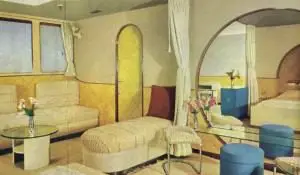
H.A.L. was justifiably proud of its new flagship and during her single year of pre-war Transatlantic service at least four lavishly illustrated brochures were issued.
The new Holland-America Line flagship, “Nieuw Amsterdam” represents more than the emphasis on historical association that her name implies. She is a modern spiritual counterpart of her city-godparent a vibrant youthful expression from the old country to the youth of the new; bringing the common heritage of each into the vivid spotlight of the present.
The breadth of vision, and the novel treatment of traditional problems of marine architecture complement, in an amazing manner, the vigor, bold enterprise, and confidence that are the dominating characteristics of twentieth century Manhattan. Sixteen architects, judiciously chosen from the younger generation, were entrusted with this task. Working independently with their own staffs of artists, they solved their own problems in their own way. The result is comparable to the finished performance of a massed choir with all its component parts in proper relation to the whole.
Before proceeding to a description of the public rooms, and the more impressive works of art, it may be well to include a reference to an outstanding architectural theme. The motivating idea in many of the rooms was to make them definitely subjective to the passenger, to make their decorations vivacious in his presence. Subdued color schemes and motifs were purposefully introduced for their contributing influence to bright chatter and gay clothes;. The artists, in an inspired moment, resorted to a thoroughly professional solution of the problem. They used the rooms future occupants as their foreground; the room itself as the middle distance, and its decorative appurtenances for background.
A brief history of the ship through 1947.
The Nieuw Amsterdam, 36,667 gross-ton flagship of the Holland-America Line made her initial postwar sailing from Rotterdam and Southampton on October 29, 1947 and arrived at New York, her namesake city, on November 5.
Galleries
Room Plans
Prewar Gallery
- Tourist Class Longe
- Tourist Class Library
Prewar Brochurc
Art

